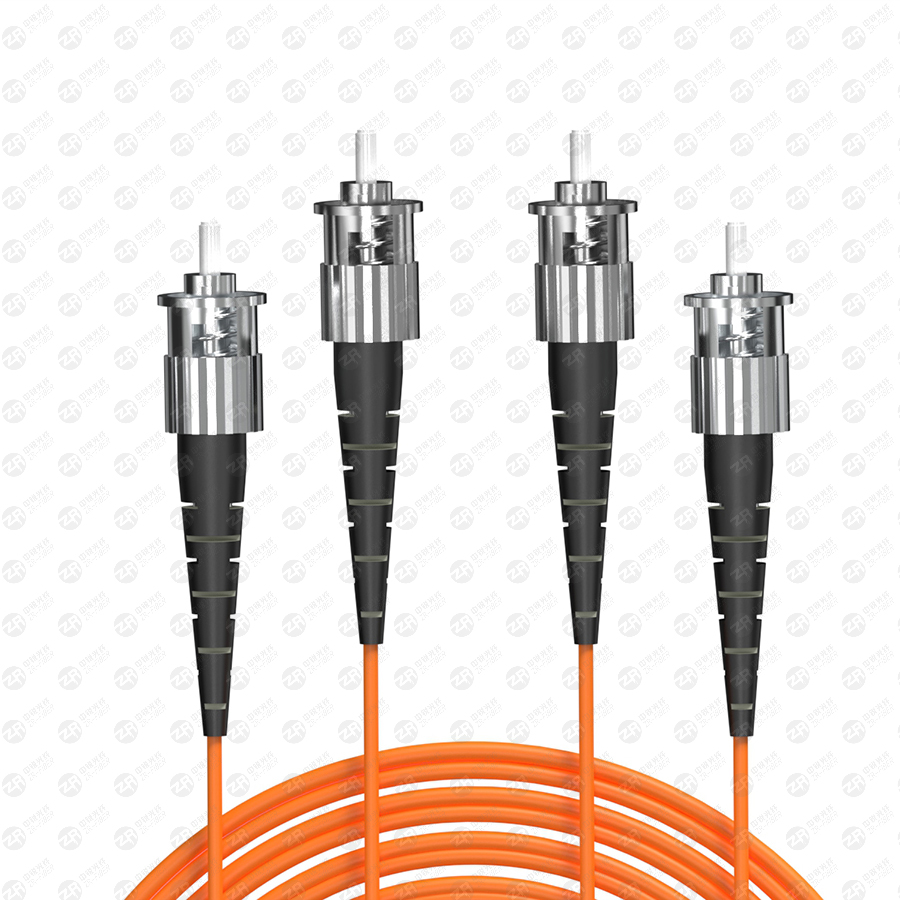- Sales SupportContact Sales
- Call us at: +(86) 15211074652
- Send us a email at: info@zr-fibercable.com
Double -work multi -mode fiber jumper ST analysis
Double-work multi-mode fiber jumper ST, also known as multi-strand ST fiber optic patch cords, are commonly used in fiber optic networks to provide a quick and easy connection between multiple devices. In this article, we will analyze the features and applications of double-work multi-mode fiber jumper ST.
Features of Double-Work Multi-Mode Fiber Jumper ST:
Double-work multi-mode fiber jumper STs are typically composed of multiple fiber optic cables that are bundled together and terminated with ST connectors on both ends. The ST connector is a popular connector in fiber optic networking that uses a bayonet-style locking mechanism to ensure a secure connection. These fiber optic patch cords are typically available in various lengths and configurations, depending on the specific application.
One of the primary advantages of double-work multi-mode fiber jumper STs is their ability to support multiple connections simultaneously. This makes them an ideal choice for use in data centers, where multiple devices need to be connected to a single switch or router. Another advantage is their high bandwidth capability, which allows for high-speed data transmission over short to medium distances.
Applications of Double-Work Multi-Mode Fiber Jumper ST:
Double-work multi-mode fiber jumper STs are commonly used in a variety of applications, including data centers, local area networks (LANs), and telecommunications networks. They are particularly well-suited for use in applications that require high bandwidth and reliable connections.
Data Centers:
In data centers, double-work multi-mode fiber jumper STs are commonly used to connect servers, switches, and storage devices to a central network. They are ideal for use in data centers due to their high bandwidth capability and ability to support multiple connections simultaneously. Additionally, their compact size makes them easy to install and manage, even in crowded data center environments.
Local Area Networks (LANs):
Double-work multi-mode fiber jumper STs are also commonly used in LANs to connect desktop computers, printers, and other devices to the network. They are particularly useful in situations where Ethernet cabling is not feasible, such as in older buildings or areas with limited space. In addition, their high bandwidth capability allows for fast data transfer speeds, making them ideal for use in high-performance LAN environments.

Telecommunications Networks:
In telecommunications networks, double-work multi-mode fiber jumper STs are often used to connect equipment such as routers, switches, and multiplexers to a fiber optic backbone. They are ideal for use in telecommunications networks due to their high bandwidth capability and ability to support multiple connections simultaneously. Additionally, their robust design ensures reliable performance in demanding telecommunications environments.
Conclusion:
Double-work multi-mode fiber jumper STs are an essential component in fiber optic networks, providing reliable connections and high bandwidth capability. They are widely used in data centers, LANs, and telecommunications networks, among other applications. Their ability to support multiple connections simultaneously makes them an ideal choice for environments where multiple devices need to be connected to a single network. When choosing a double-work multi-mode fiber jumper ST, it is important to consider factors such as length, configuration, and compatibility with other network components to ensure optimal performance.
You might be interested in
We use cookies to ensure that we give you the best experience on our website. By clicking on "Accept" or continuing to use this site, you agree to our use of cookies in accordance with our Cookie Policy .You can refuse the use of cookies here.
Accept

